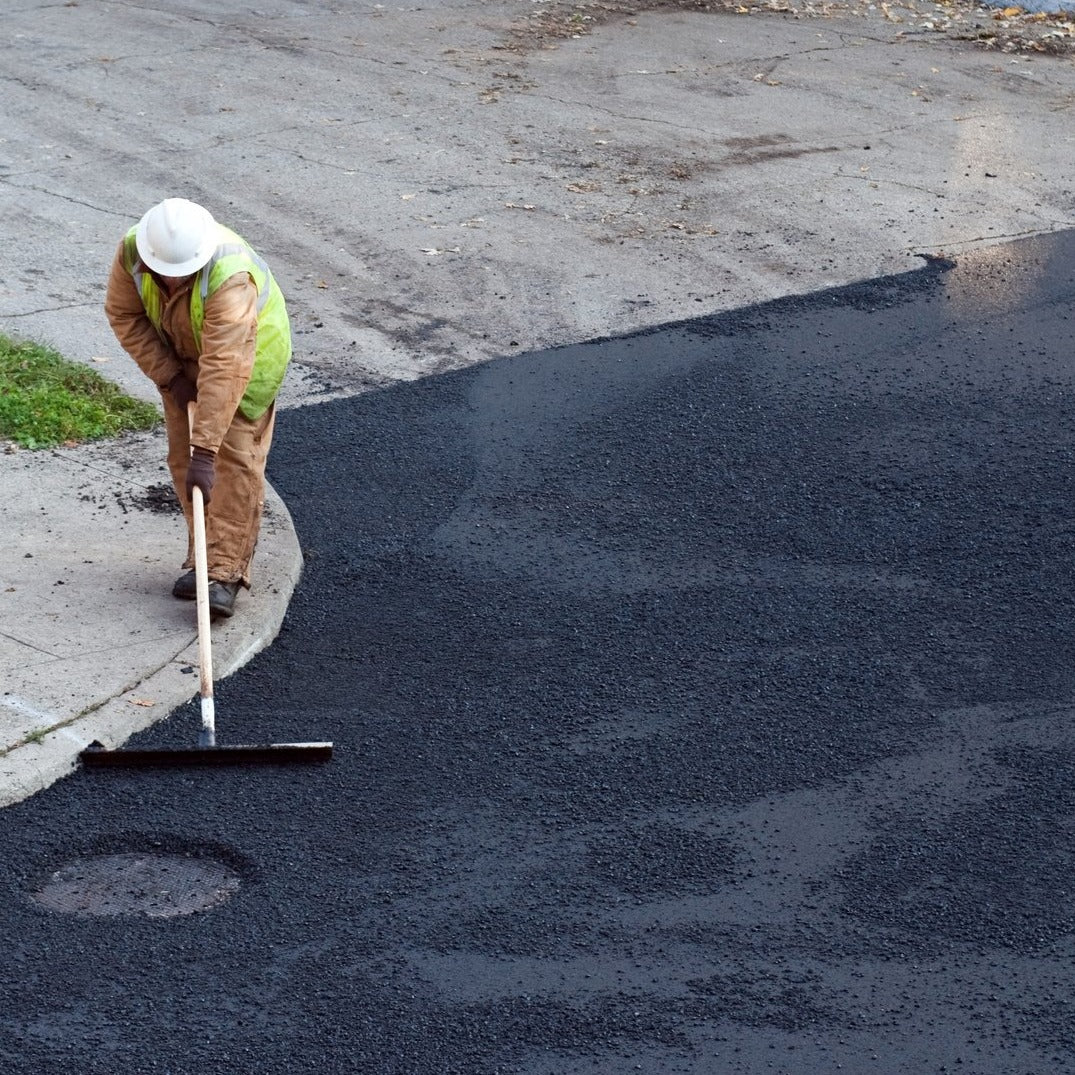Hot Mix Asphalt Paving: Redefining Industrial Property Landscapes
Hot Mix Asphalt Paving: Redefining Industrial Property Landscapes
Blog Article
Unlocking the Tricks of Hot Mix Asphalt Innovation
Exploring the depths of hot mix asphalt technology uncovers a world where precise solutions and thorough procedures merge to shape our roads and facilities. The combination of binders, fillers, and accumulations isn't simply a building task however a strategic orchestration of longevity and efficiency. As we peer right into the intricate dance of elements, a tapestry of durability and sustainability unravels. What exists beneath this surface area of asphaltic mastery, and what tricks wait to be unveiled in the world of paving innovations?
Value of Hot Mix Asphalt
Hot Mix Asphalt plays a critical function in modern-day infrastructure advancement due to its durability and cost-effectiveness. As the most typically used paving product for roadways, freeways, and car park whole lots, Hot Mix Asphalt supplies a range of advantages that contribute to its value in construction tasks.
The resilience of Hot Mix Asphalt stems from its make-up, which includes aggregates, binder, and filler products that are meticulously picked and blended to meet particular efficiency demands. Overall, the value of Warm Mix Asphalt in infrastructure development can not be downplayed, as it proceeds to be a cornerstone of modern building and construction practices.
Parts of Asphalt Mixes
The composition of asphalt blends includes thoroughly picked accumulations, binder, and filler materials that are crucial for attaining certain performance requirements. Accumulations are the primary component of asphalt blends, offering toughness and security. These aggregates can be natural, such as crushed rock or crushed rock, or artificial, like recycled materials from old pavements. The binder, generally asphalt or asphalt cement, holds the accumulations with each other and provides adaptability and toughness to the mix. The option of the binder is essential as it directly affects the mix's performance in different weather. Fillers, such as moisturized lime or Portland concrete, are utilized to improve the mix's workability and aging resistance. Angled Parking.
The combination and proportion of these components play a substantial duty in establishing the top quality and performance of the asphalt mix. Designers thoroughly develop the mix to fulfill certain needs, thinking about elements like web traffic volume, climate conditions, and pavement life-span. Correct selection and balancing of accumulations, binder, and fillers are important for developing long lasting, lasting asphalt sidewalks.
Combining and Manufacturing Strategies

Once the accumulations are selected, the binder, frequently asphalt cement, is included in bind the products with each other. The binder's top quality and amount considerably influence the mix's strength, versatility, and resistance to ecological elements. Additionally, fillers like hydrated lime or Rose city concrete might be integrated to boost specific features of the asphalt mix, such as its workability or dampness resistance.
During manufacturing, the aggregates and binder are warmed, normally in between 250-325 ° F(121-163 ° C ), to facilitate blending and guarantee proper layer of the accumulations. The blending process must be thorough to attain a homogeneous mix that advertises the preferred efficiency qualities of the asphalt. Numerous techniques, such as set blending or drum blending, are used to accomplish premium and regular asphalt blends for construction projects.
Elements Affecting Asphalt Efficiency
Factors affecting asphalt efficiency include a range of variables that impact the resilience, long life, and overall top quality of asphalt sidewalks. One key element is the quality of products utilized in the asphalt mix.

Style factors to consider, such as pavement thickness and drain, are important in ensuring the lasting efficiency of the asphalt sidewalk. By carefully thinking about these aspects, contractors and engineers can enhance asphalt efficiency and enhance the solution life of pavements.
Lasting Practices in Asphalt Modern Technology

WMA allows for the production and positioning of asphalt blends at reduced temperature levels contrasted to traditional hot-mix asphalt, resulting in decreased power intake and greenhouse gas emissions. The usage of porous asphalt mixes can help mitigate stormwater overflow concerns by permitting water to infiltrate through the pavement and right into the ground, promoting natural water filtering and charge procedures.
Verdict
To conclude, warm mix asphalt innovation plays a critical duty the original source in modern-day framework growth due to its sturdiness and cost-effectiveness. By very carefully stabilizing components, using correct blending methods, and considering numerous factors, engineers can create top quality asphalt blends that hold up against rush hour loads and rough weather. Accepting lasting techniques, such as utilizing warm-mix innovations and recycled materials, further enhances the ecological friendliness of asphalt technology.
Blending and manufacturing methods in hot mix asphalt modern technology involve the accurate combination and processing of aggregates, binder, and fillers to produce a high-performance and sturdy asphalt mix.Elements affecting asphalt performance incorporate a variety of variables that impact the longevity, longevity, and overall high quality of asphalt sidewalks. Sustainable methods in asphalt modern technology include different campaigns intended at lowering the ecological influence of asphalt production and paving processes. By including recovered asphalt sidewalk (RAP) and recycled asphalt tiles (RAS) right into brand-new asphalt blends, the industry can considerably reduce the intake of raw products and energy, while also decreasing landfill waste.
WMA permits for the production and placement of asphalt mixes at reduced temperatures contrasted to conventional hot-mix asphalt, resulting in reduced energy usage and greenhouse gas exhausts.
Report this page